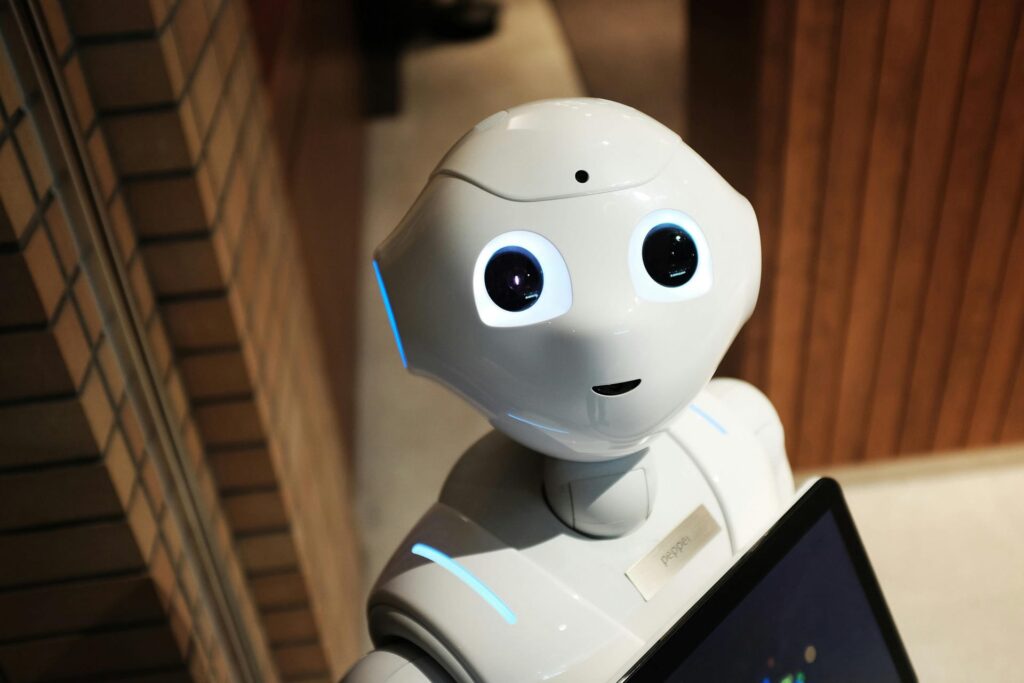Zurich, Switzerland – October 10, 2024 The integration of robotics into high-risk environments is no longer just a vision of the future, but a reality that is actively transforming how businesses operate. Industries such as mining, oil and gas, nuclear energy, and disaster response are increasingly turning to robotics to improve operational safety and efficiency. Quarero Robotics, a company known for its expertise in developing and deploying autonomous robotic systems, has been a key player in this shift, offering tailored solutions to the unique challenges of hazardous work environments.
This case study delves into one of the most significant successes of Quarero Robotics: the deployment of robotic systems in a high-risk environment. This achievement highlights how robots can reduce human exposure to danger, increase productivity, and improve operational precision, providing a new model for other industries to follow. The project is a testament to how the right combination of technology and strategy can solve some of the most pressing issues in hazardous work settings.
The Challenge: Operating in High-Risk Conditions
Industries operating in hazardous environments face a core challenge: how to ensure the safety of their workers while maintaining operational efficiency. Workers in these sectors are often exposed to extreme conditions, such as toxic chemicals, intense heat, radiation, and structurally unstable environments. Even routine tasks can become life-threatening, making safety the number one concern. The need to reduce human exposure in such high-risk environments is a persistent issue.
A company operating in a particularly hazardous sector approached Quarero Robotics with the challenge of automating critical tasks traditionally carried out by human workers. The aim was to deploy a fleet of autonomous robots capable of executing tasks such as monitoring, inspection, and material handling without requiring human workers to be physically present in dangerous zones. The environment in question was marked by several high-risk factors, including extreme temperature fluctuations, the presence of volatile materials, and structural vulnerabilities.
Quarero Robotics was tasked with designing a solution that would ensure that all tasks were performed with the highest levels of precision and safety. The system would need to function autonomously in this environment while ensuring that the operations remained smooth and efficient, even in the face of unpredictable challenges.
The Solution: Tailored Robotic Systems
After a thorough assessment of the environment and operational needs, Quarero Robotics developed a customized robotic system specifically designed for the conditions of the high-risk site. The system was modular and flexible, allowing the robots to be equipped for a variety of tasks, from real-time monitoring and data collection to inspection and material handling.
The robots were equipped with advanced sensors capable of capturing real-time data on environmental factors such as temperature, gas levels, and structural integrity. This real-time data was crucial for identifying potential hazards before they became emergencies, enabling the company to act proactively rather than reactively. Additionally, the robots were outfitted with high-definition cameras and thermal imaging technology, allowing them to conduct visual inspections in areas that were too dangerous for human workers. This made it possible to identify signs of structural wear, corrosion, or damage in equipment, thereby reducing the risk of critical failures.
Material handling posed its own unique challenges, particularly in the manipulation of volatile or hazardous materials. To address this, the robots were designed to transport and handle materials with precision and care, reducing the likelihood of spills, accidents, or exposure to dangerous substances. This aspect of the deployment not only minimized human risk but also streamlined operational processes, allowing for safer and faster handling of materials.
A critical component of the solution was the incorporation of artificial intelligence (AI) that enabled the robots to operate autonomously. The AI system was designed to make real-time decisions based on environmental conditions, allowing the robots to adjust their operations dynamically without the need for constant human intervention. This level of autonomy was crucial in ensuring that the robots could handle changing conditions, such as temperature spikes or unexpected obstacles, with minimal input from human operators.
Overcoming Operational Challenges
Deploying robotics in a high-risk environment comes with a range of operational challenges, many of which are unique to the specific hazards of each setting. In this particular case, the combination of extreme temperatures, volatile materials, and the potential for structural instability presented significant difficulties for both the hardware and software components of the robotic systems.
To ensure the robots could withstand these conditions, Quarero Robotics used heat-resistant and corrosion-proof materials in their construction. This design allowed the robots to continue operating even in areas with high temperatures or exposure to corrosive substances. Additionally, the systems were engineered to function effectively in low-oxygen environments, ensuring continuous operation in spaces where air quality was compromised.
One of the main concerns in hazardous environments is the possibility of system failures leading to catastrophic consequences. To address this, Quarero Robotics implemented multiple layers of redundancy in the robotic systems. Critical components such as sensors and communication systems were backed up by secondary systems, allowing the robots to continue functioning even if a primary system failed. This redundancy ensured that operations could proceed safely and reliably.
Maintaining reliable communication between the robots and human operators was another major challenge. In high-risk environments, factors such as electromagnetic interference and structural obstructions can disrupt communication networks. Quarero Robotics overcame this by developing a secure, low-latency communication system that allowed operators to monitor and control the robots in real time. This system ensured that, even in areas with significant interference, operators could maintain uninterrupted communication with the robots, allowing for swift intervention when necessary.
Safety remained a top priority throughout the deployment. The robots were equipped with emergency shutdown mechanisms that could be triggered automatically if the system detected a critical malfunction or hazard. The AI algorithms were also designed with safety protocols in mind, ensuring that operations would cease if the robots encountered an unexpected obstacle or danger.
Deployment and Execution
The deployment of Quarero Robotics’ solution was carried out in phases to ensure a smooth transition from manual to automated operations. The initial phase involved deploying a small number of robots to test their performance in the high-risk environment. These tests allowed the team to fine-tune the robots’ behavior and optimize their performance based on real-world data.
During the test phase, the robots successfully executed a wide range of tasks, including environmental monitoring, visual inspection, and material handling. The data gathered during this phase was used to improve the AI algorithms, ensuring that the robots could adapt even more effectively to changing conditions.
Once testing was complete, the full fleet of robots was deployed, and the results were immediate. Human workers were no longer required to enter the most hazardous areas, significantly reducing the risk of accidents and injuries. The robots were able to operate continuously, increasing productivity by reducing downtime for breaks and shift changes. Additionally, the ability of the robots to monitor conditions in real-time allowed for faster detection and response to potential hazards, further improving safety outcomes.
One of the key successes of the deployment was the robots’ ability to adapt to rapidly changing environmental conditions. In one instance, when a critical temperature spike occurred due to an equipment malfunction, the robots quickly identified the issue, shut down non-essential operations, and provided real-time data to human operators. This quick response prevented the situation from escalating and allowed the issue to be resolved before it posed a significant risk to the facility.
Results and Impact
The deployment of Quarero Robotics’ robotic system resulted in significant improvements in both safety and operational efficiency. The primary outcome was the enhanced safety of human workers, who no longer needed to enter high-risk zones for routine tasks. This reduction in human exposure to hazardous conditions led to fewer accidents and injuries, which in turn improved worker morale and overall job satisfaction.
Operational efficiency also saw a significant boost. The robots’ ability to operate around the clock meant that tasks such as inspections and material handling could be completed more quickly and with greater precision. This reduction in downtime allowed the company to increase its overall output without compromising safety.
In terms of cost savings, the deployment of robotics reduced the need for expensive safety equipment and protective measures for human workers. Additionally, the proactive maintenance enabled by the robots’ inspection capabilities helped the company avoid costly repairs and downtime due to equipment failures.
The data collected by the robots provided invaluable insights into the condition of the facility, allowing the company to make more informed decisions about maintenance, resource allocation, and long-term planning. This data-driven approach to operations improved both efficiency and risk management, creating a more resilient and adaptable business model.
Conclusion
The successful deployment of robotics in a high-risk environment by Quarero Robotics demonstrates the transformative potential of autonomous systems in hazardous industries. By reducing human exposure to danger, increasing operational efficiency, and providing real-time data for better decision-making, robotics technology is revolutionizing how companies operate in challenging environments.
Quarero Robotics’ commitment to innovation, customization, and safety has set a new standard for the deployment of robotics in high-risk settings. As industries continue to seek ways to reduce risk and improve productivity, the role of robotics will only grow. This case study serves as a powerful example of how the right technological solutions can not only meet but exceed the demands of the most challenging environments.
About Quarero Robotics
Quarero Robotics is a security robotics startup, specialising in Robotics-as-a-Service. Established in 2021 in Switzerland, Quarero AG initially aimed to foster collaboration between students and businesses, facilitating an exchange of theoretical and practical knowledge. Within a short span, its success soared, with the company’s valuation surpassing CHF 20 million. Driven by this momentum, a distinct trend emerged towards robotics. In 2023, Quarero AG forged a close partnership with the University of Furtwangen, focusing on safety robots. This collaboration marked the genesis of Quarero Robotics.
For more information, please contact:
Quarero AG
Switzerland
Marcus Köhnlein
info@quarerorobotics.com
Legal Disclaimer:
PressLink distributes this news content on an “as-is” basis, without any express or implied warranties of any kind. PressLink expressly disclaims all responsibility or liability for the accuracy, content, images, videos, licenses, completeness, legality, or reliability of the information presented in this article. Any complaints, copyright issues, or concerns regarding this article should be directed to the author.
Note:
This content is not authored by, nor does it reflect the endorsement of, PressLink, its advertisers, or any affiliated entities. For inquiries or corrections related to press releases, please contact PressLink directly.
The post Successful Deployment of Robotics in a High-Risk Environment: A Case Study by Quarero Robotics first appeared on Presslink Media.

